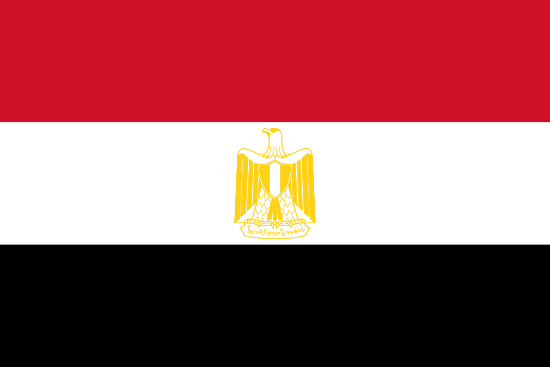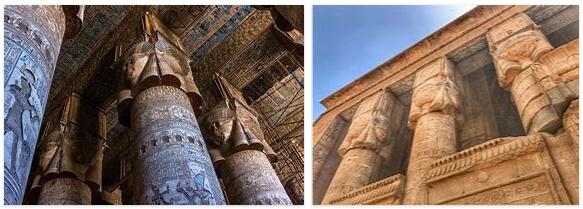Nigeria Human and Economic Geography in the Early 2000’s
Central-West African state. With an estimated population of 131,530,000 residents in 2005 (compared to the 88,514,501 registered in 1991), Nigeria is the most populous nation in Africa, with an average annual growth rate of 2.2 % (2000-2005). It is divided into 374 ethnic groups, some of which have fewer than 10,000 individuals; the seven main groups bring together 78 % of the total population (Hausa and Fulani 29 %, Yoruba 21 %, Igbo 18 %, Kanuri 4 %, Ibibio 3.5 %, Tiv 2.5 %). Economic development has led to large-scale emigration from the countryside to large cities, and consequently the rate of urbanization has increased significantly (46.7 % in 2003). The agglomeration of Lagos, the largest city and until 1991 the capital of the country, which in 1996 had 13,427,000 residents, is probably destined to reach 23 million in 2020, making it the largest metropolitan area in the world. Based on the HDI (Human Development Index), an aggregate indicator that the United Nations considers particularly expressive of the level of social and economic development of a country, in 2004 the Nigeria (life expectancy at birth 43/44 years, adult literacy rate 67 %) was placed at 159th place in the ranking that includes 177 countries in the world.
According to SUNGLASSESTRACKER.COM, Nigeria has the characteristics of a dualistic economy: a modern sector, dependent on oil revenues, overlaps with a more traditional one, oriented towards agriculture and trade. At the time of independence (1960) the agricultural sector provided well over half of GDP and was the main source of export revenue. Subsequently, the role of engine of the economy was assumed by the oil sector, led by the national company created in 1977, the Nigerian National Petroleum Corporation; in 2004 oil represented 88.5 % of the value of exports.
However, agriculture remains an important economic activity (30.6 % of the workforce and 26.4 % of GDP in 2003). FAO attributes low to medium potential productivity to Nigeria’s land, but points out that there is ample scope for productivity growth and crop expansion on previously uncultivated land. Despite the presence of large rivers, the Niger and the Benue, irrigated agriculture is not very widespread; on the other hand, the foreseeable intensification of agricultural activity following the demographic growth is destined to meet a limit in the more ecologically fragile lands, in particular in the northern part of the country, where the soils are subject to the risk of degradation and desertification. Yam, cassava, rice, corn, sorghum, millet are the main crops destined for self-consumption, whose overall production cannot keep up with the population growth, and Nigeria, once a strong exporter of food, is forced to resort to imports. Until the1991 the country was the fourth largest world exporter of cocoa beans, centralizing more than 7 % of the world trade in this commodity, even if later this production was significantly reduced (380,000 t in 2004), primarily due to the aging of plantations and the diseases that have affected them, as well as low-paying prices for farmers. The quantity of rubber obtained from rubber trees is fair (112,000 t in 2004), for which Nigeria has established itself as the second producing country on the African continent, after the Ivory Coast and before Liberia. Programs are underway to increase production of this product and oil palm, with support from the World Bank.
The country’s greatest resource, as mentioned, is represented by hydrocarbons. Oil reserves, mainly located in the South-East of the country and in the coastal area, are estimated at 32 billion barrels, while production, largely controlled by foreign multinationals, in 2004 had exceeded 125 million tons, thanks to which Nigeria asserted itself as the fourth producer within the OPEC (Organization of the Petroleum Exporting Countries). The proven reserves of natural gas amount to 4007 billion m 3, with an energy content slightly higher than that of oil reserves; in 2003 they were extracted19,200 million m 3, partly conveyed, through two gas pipelines, from the extraction areas to the Afam thermal power plant and to the Port Harcourt industrial area. The subsoil also contains abundant mineral deposits (coal, tin ores, kaolin, gypsum, columbite, tantalite, gold, precious stones, barite, graphite, marble, sulfur and uranium). In 2004, exports were mainly absorbed by the US market (47.5 %), Brazil (10.7 %) and Spain (7.1 %). Imports (machinery, means of transport, chemicals, etc.) were mainly supplied by China (9.4 %), the United States (8.4 %) and the United Kingdom (7.8 %); Italy’s contribution was 4 %.
Only in the early 21st century. Nigeria has begun to undertake the indispensable economic reforms, oriented towards privatization and the difficult objectives of reducing inflation, modernizing the banking system and resolving the long-standing conflicts over the distribution between the various federated states of the proceeds of the oil industry . These proceeds represent more than 90 % of foreign currency revenues, but are largely dissipated by the governments of the 36 states and the 774 local administrative districts, due to the malfunctioning of bureaucratic systems and widespread corruption, repeatedly denounced by international organizations..
The problem of foreign debt, which strongly conditions the possible development of the country, was tackled through long and complex negotiations with international financial institutions and was only partially solved in 2005.



